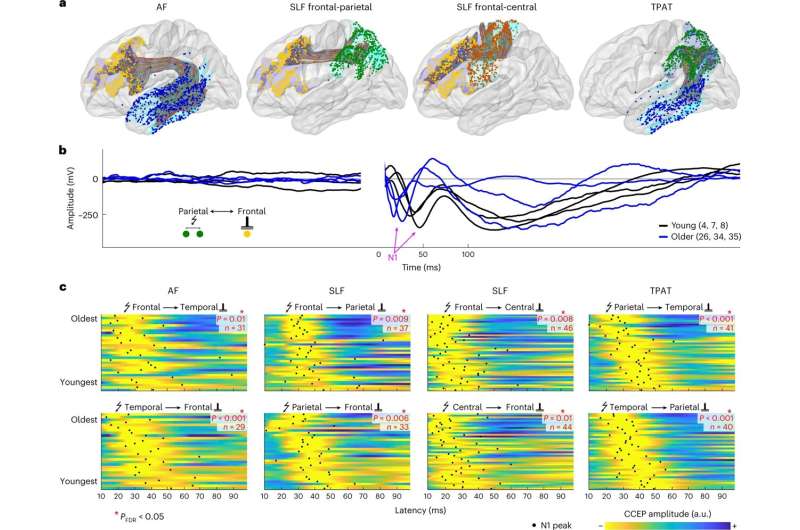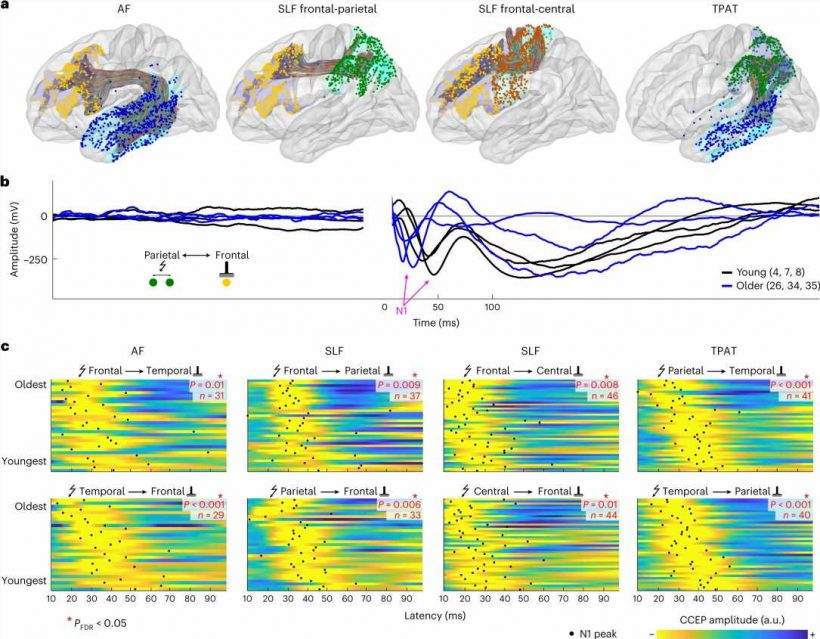
Recent research from University Medical Center Utrecht (UMC Utrecht) shows that our brain declines later than previously thought. Instead of after our 25th year of life, it happens when we are between the ages of 30 and 40. The researchers published their results in Nature Neuroscience.
Clinical technologist Dorien van Blooijs and neurologist Frans Leijten, together with colleagues from UMC Utrecht and the Mayo Clinic, conducted research into the processing speed of our brain and how it changes as we age.
Faster connections
The researchers discovered, among other things, that the connections in our brain become increasingly faster: from two meters per second in children aged four to four meters per second in people aged between thirty and forty. A doubling, in other words. Only after that age does it slow down. “Our brain continues to develop a lot longer than we thought,” Van Blooijs said.
The researchers also see differences between brain regions. The frontal lobe, the front part of our brain responsible for thinking and performing tasks, develops longer than an area responsible for movement. Van Blooijs explains, “We already knew this thanks to previous research, but now we have concrete data.” The development of speed is not a straight line, but rather a curve.
Brain map
The researchers obtained the data by making precise measurements using an electrode grid that some epilepsy patients get placed on their brain (under the skull) in preparation for epilepsy surgery. The grid consists of 60-100 electrodes that can measure brain activity. “By stimulating the electrodes using short currents, we can see which brain areas respond abnormally. Thus, we can create a map of which areas should and should not be removed during epilepsy surgery,” Leijten said.
The fact that the data could also teach the researchers something about how our brain works was a new insight. “We have been collecting this data for about 20 years,” Leijten said. “It wasn’t until a few years ago that we realized we could use the unaffected areas as a model for the healthy human brain.”
Van Blooijs adds, “If you stimulate an electrode in one area, a reaction occurs in another. That lets you know the two areas are connected. You can then measure how long it takes for the reaction to occur. If you know the distance between the two different brain regions, you can calculate how fast the signal is transmitted.”
Better computer models
The results of this study provide important information about our central nervous system. Scientists have long been trying to map the connections in our brain. With this information, experts can make more realistic computer models of our brain.
For these models to work, in addition to information about the connections, precise values concerning the speed of those connections are needed. “We now have these numbers for the very first time,” Leijten explains, “With our data, researchers can make new and better computer models that increase our understanding of the brain. We expect our work to not only advances epilepsy research, but also research into other brain disorders.”
More information:
Dorien van Blooijs et al, Developmental trajectory of transmission speed in the human brain, Nature Neuroscience (2023). DOI: 10.1038/s41593-023-01272-0
Journal information:
Nature Neuroscience
Source: Read Full Article
